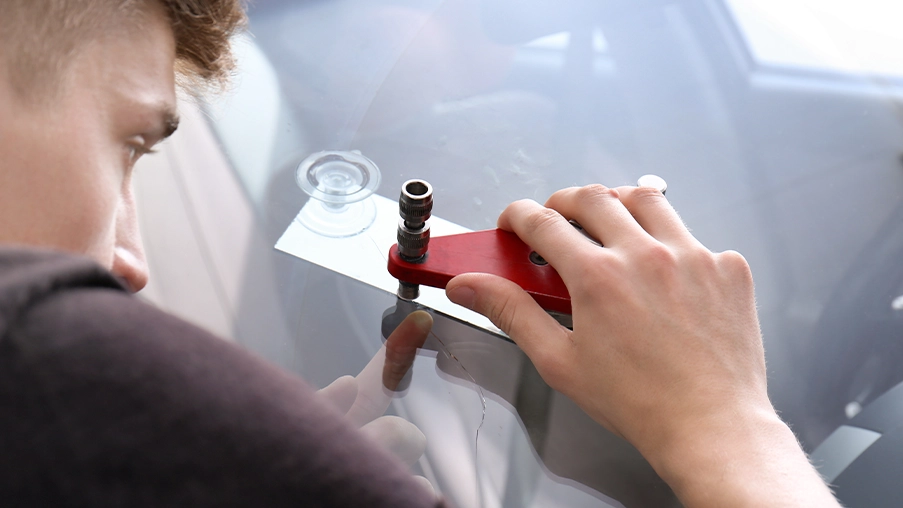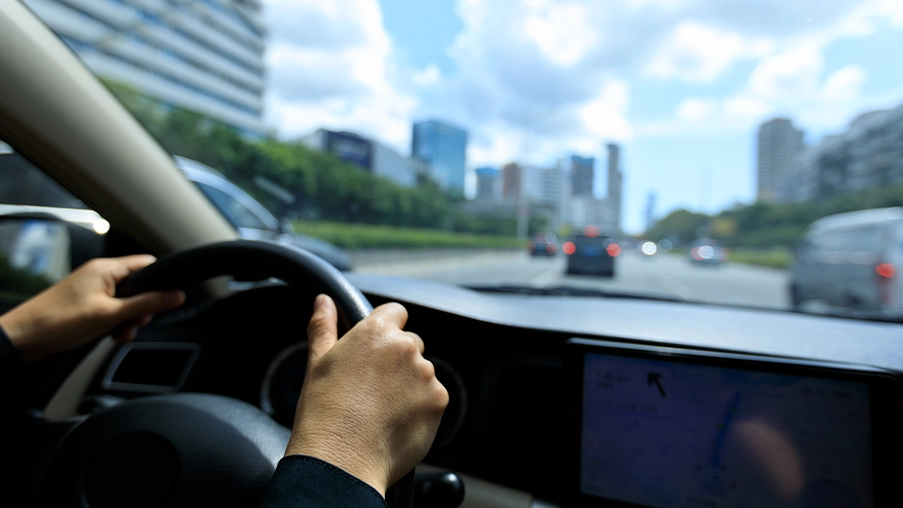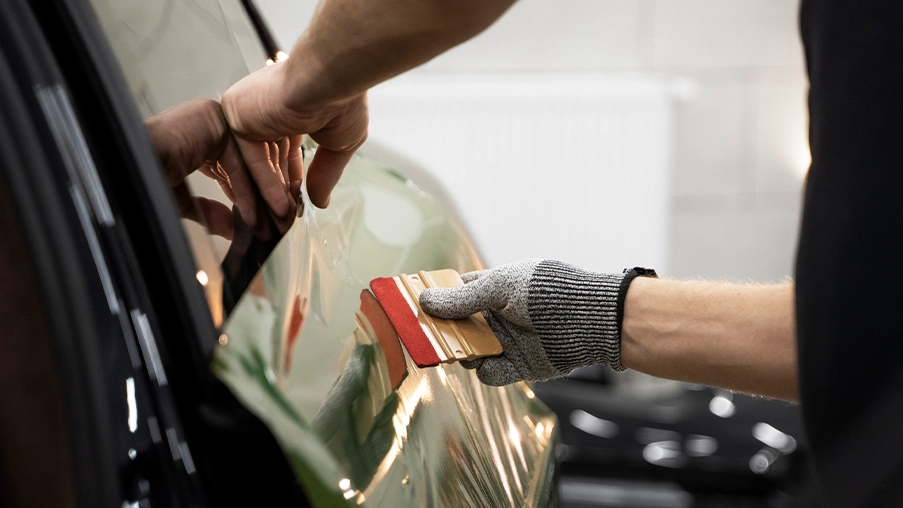Is It Safe to Drive with a Cracked Windshield? Know the Risks and Fixes
January 19, 2021
Your windshield does more than just protect you from wind and debris; it is critical to the structural integrity of your vehicle and overall road safety.
A broken windshield may appear to be a minor inconvenience at first, but it is much more than that—it is a potential disaster waiting to happen.
So, is it safe to drive with a cracked windshield? The answer is not as simple as you would think. Although ignoring the problem might seem simpler, doing so puts you, your passengers, and possibly even those nearby at serious risk.
In the blog, we will explain why driving with a cracked windshield is dangerous and the dangers of delaying repairs.
Why Windshields Are Essential for Vehicle Safety
You are protected from the elements by your windshield, which keeps wind and debris out. Additionally, it is an integral component of your vehicle’s safety system. This is why your windshield is important:
- Structural Support: The windshield helps maintain your car’s structural integrity, especially in rollover accidents
- Airbag Deployment: In case of an accident, the windshield helps to deploy the airbags in the proper manner, thereby avoiding serious injuries
- Clear Visibility: A clean, intact windshield ensures an unobstructed view of the road, reducing accident risks
- Energy Absorption: The laminated glass in modern windshields absorbs impact energy during accidents, reducing the force that reaches occupants and lowering the risk of injury
These safety elements are damaged when you drive with a defective windshield, endangering both you and your passengers.
Is It Safe to Drive with a Cracked Windshield? If Not, why?
In addition to looking bad and affecting the aesthetic appeal of your car, a cracked windshield is also a hazard.
Here’s why driving with a cracked windshield is dangerous:
Impaired Visibility
Your view may be distorted by even a tiny crack, particularly if it is exposed to sunshine or headlights. This can make it difficult for you to respond to traffic risks and also increases the chances of accidents.
Structural Weakness
A cracked windshield increases the likelihood that it will shatter when struck, endangering the structural integrity of your vehicle and raising the possibility of serious injury in an accident.
Legal Issues
Many states, including Florida and Arizona, prohibit driving with windshield damage that obstructs your view. This means you could face fines or even have your vehicle deemed unfit for road use.
Escalating Damage
Small cracks don’t last long. They may spread due to temperature fluctuations, vehicle vibrations, or even little bumps, weakening the windshield even more and increasing the cost of repairs.
Increased Risk During Airbag Deployment
If your airbag deploys during a collision, a cracked windshield may fail to support it properly. This could compromise the airbag’s effectiveness and increase the severity of injuries.
By neglecting repairs, you expose yourself to fines, tickets, and potential accidents.
How Long Can You Drive with a Crack in Your Windshield?
The answer depends on several factors, such as the crack’s size, location, and the environmental conditions your car encounters. Here’s a general guideline:
- Small Chips or Cracks: If the damage is smaller than a quarter and away from the driver’s line of sight, you may have a little time before a car window replacement becomes urgent
- Larger Cracks or Obstructions: Cracks in the driver’s view or larger than a dollar bill require immediate attention
- Extreme Weather Conditions: Rapid temperature changes can cause cracks to expand quickly, worsening the problem
Ignoring a cracked windshield isn’t just risky—it could escalate into a full-blown replacement instead of a minor repair.
How Urgent Is It to Repair a Cracked Windshield?
The impact of the crack on safety, visibility, and legal compliance determines how urgently it needs to be repaired.
Here are some factors that you must take into consideration:
- Safety: A cracked windshield compromises your car’s structural integrity, making it less effective in an accident. The crack can also weaken the windshield’s ability to properly deploy airbags, further compromising safety
- Legality: In states like Florida, driving with a cracked windshield that obstructs your view can result in fines. In some cases, you could be pulled over for having a cracked windshield, and authorities may issue a citation for non-compliance
- Cost: Delaying repairs may lead to more expensive fixes as cracks spread. A small crack can often be repaired inexpensively, but if left untreated, it can grow and may require a full windshield replacement
Can a Cracked Windshield Collapse While Driving?
The potential for a damaged windshield to fall while you are driving should be one of your top concerns.
Although a minor crack may not immediately cause failure, the following situations increase the risk:
- Severe Cracks: Large or deep cracks weaken the glass, making it prone to shattering.
- Road Debris: If a stone or debris hits a cracked windshield, it could cause the glass to break entirely.
- Temperature Changes: Extreme heat or cold can cause the glass to expand or contract, worsening existing damage.
Driving with a cracked windshield is a risk you can’t afford to take. The dangers are real and immediate, from impaired visibility to compromised structural integrity. Act quickly to repair or replace your windshield and ensure you are driving safely and legally.
At NuVision Auto Glass, we specialize in windshield repair & replacement, handling chipped and cracked windshields with precision while ensuring your vehicle is safe to drive. Our expert technicians use the latest techniques, including ADAS calibration, to restore your car’s safety features to optimal condition.
Contact NuVision Auto Glass today for reliable, professional windshield replacement & repair services. Your safety is our top priority!




